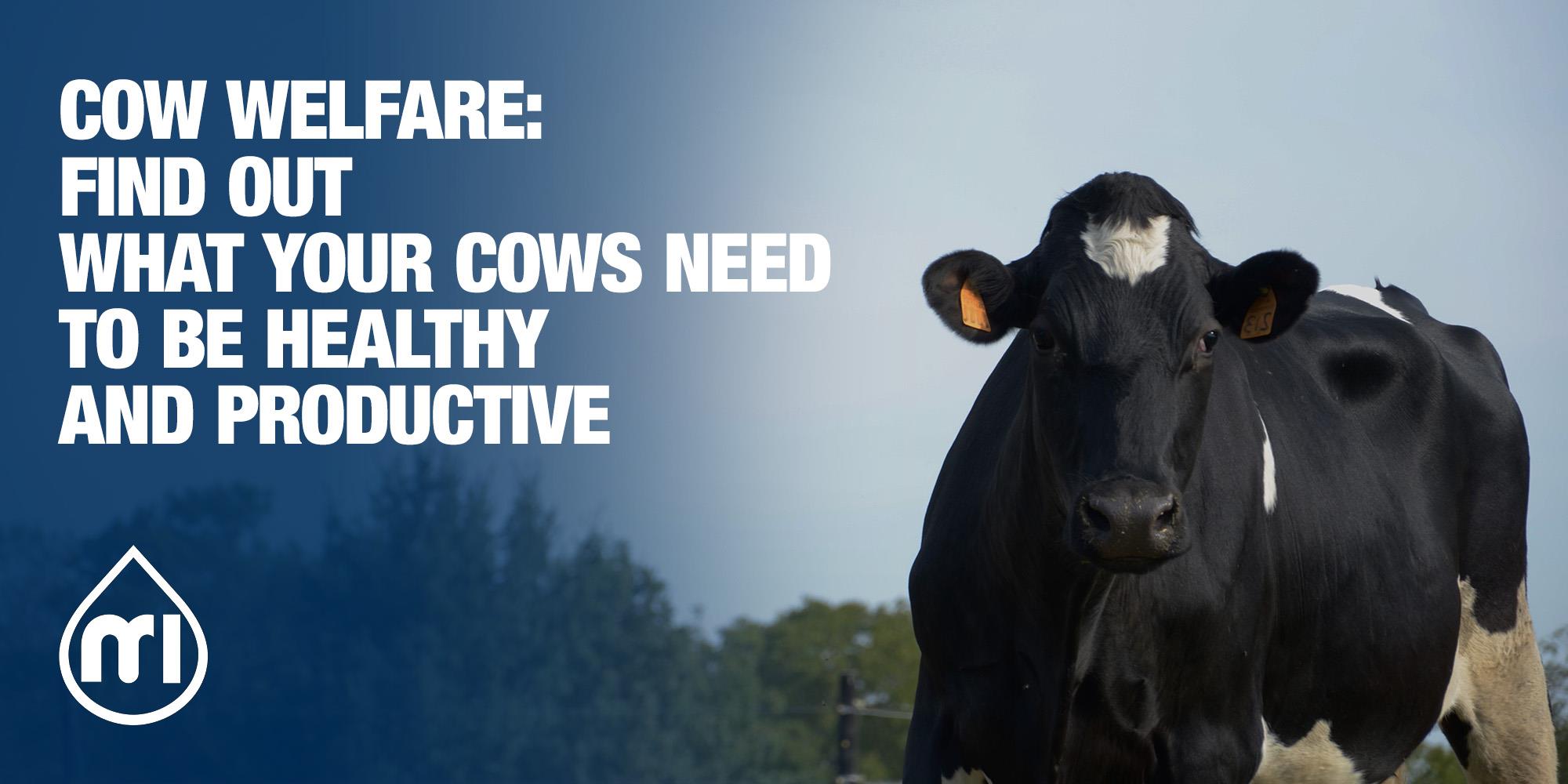
Cow Welfare: Find out what your cows need to be healthy and productive
How can you tell if your cow’s welfare is good or bad? And why is prioritizing it crucial to the efficiency of your farm? Let’s find out in this Blog series!
‘Cows need to be comfortable and free from stress so that they can as healthy and productive as possible.’
This is what Colin Reece, Global Farm Solutions Market Support Director, says about the importance of caring for your cows and ensuring their well-being. In these Blog episodes, we will investigate what this cornerstone for efficiency is, the factors affecting it, and how you can achieve it through useful dairy herd improvements.
What happens if you choose to ignore it? To fully convey the aftermath of poor cow welfare, we will also cover the main issues that come with making bad decisions and their consequences on your farm’s efficiency and profitability.
Animal welfare is made up of Five Freedoms
When asked to define animal welfare, Colin refers to the ‘Five basic freedoms’, introduced by the Farm Animal Welfare Council in 2009, which are considered the foundational principles for keeping cows healthy and stress-free.
If you are wondering what they are, here is an overview:
- Freedom from hunger, thirst, and malnutrition, which involves ensuring that animals have access to clean drinking water and sufficient feed, according to their nutritional requirements.
- Freedom from discomfort, which means providing cows with comfortable shelter and cubicles that are large enough for them to lie down and rest.
- Freedom from pain, injury, or disease, requiring prevention and prompt intervention if health issues arise in order to minimize their negative impact.
- Freedom from fear and distress by creating a calm, peaceful environment for the animals that does not cause mental suffering.
- Freedom to express normal behaviour, through proper grouping, which mitigates the negative effects of hierarchy.
The red flags of poor cow welfare
At this point, we can say that cow welfare is the way cattle respond to a combination of several factors related to the environment and farm management practices. So, the better they are, the more relaxed the animals will be and, as a result, this will enable them to fulfil their performance potential.
On the other hand, if herd well-being is low or poor, animals will give clear signs of restlessness and will be likely to suffer from health issues with negative effects on efficiency.
When talking about the main indicators of poor cow welfare, Colin states:
‘When you enter a barn, the first aspect to focus on is the number of cows standing that are not feeding or laying down. The higher it is, the worse their well-being. It may indicate that the number of cubicles is not sufficient or that they are not comfortable enough and, if animals do not spend enough time lying down, they may suffer from lameness. This painful condition prevents them from eating, resulting in a decrease in milk production and an increase in treatment costs.
Moreover, it can also be a sign of issues with rumination and feeding. In fact, cows perform well in these respects when most of the herd is eating or lying down. Another indicator of issues with feeding are cows’ tails: if many of them are swishing their tails, it could reflect poor rumen health, and excessive tail movement can be caused by irritation in the hindgut.
To determine whether cows are scared or stressed, try getting closer to them: if they run away, it is a clear sign of a stressed environment, which may cause a decrease in milk production.
In fact, cows are fundamentally inquisitive animals and normally some cows will want to come up to you to find out who and what you are.’
So far, thanks to Colin’s advice, we have gone over the crucial Freedoms you should ensure for your cows in order to have healthier, better-yielding animals, and we also mentioned some of the main indicators of poor cow welfare.
But there is still so much to say: make sure you don’t miss our next Blog episode!
Sources:
- Cow Talk, Chapter 8: Auditing Cow Welfare Moran, Doyle – CSIRO, 2015
- Dairy herd improvements to promote cow welfare - Dairy Global, 5/21
